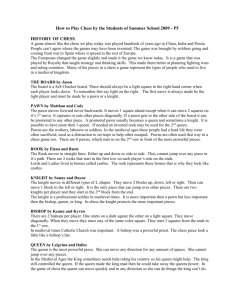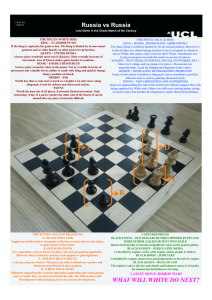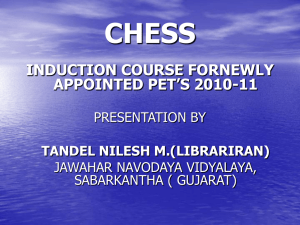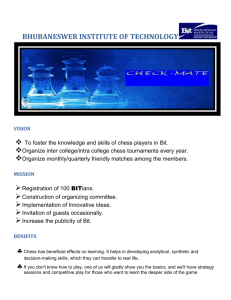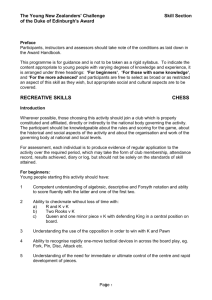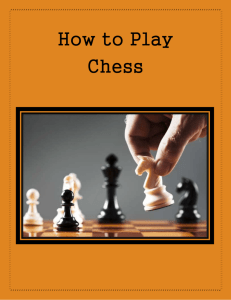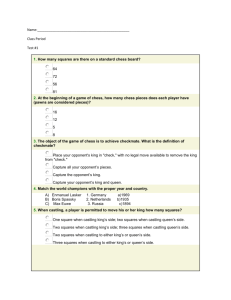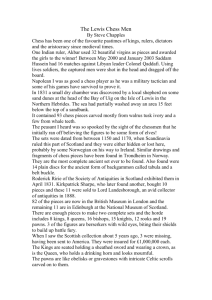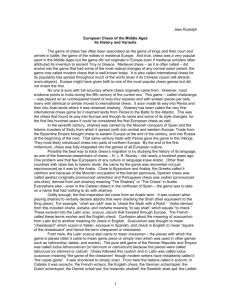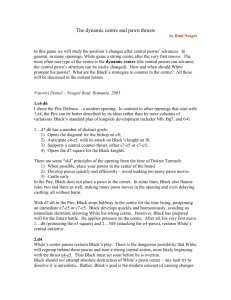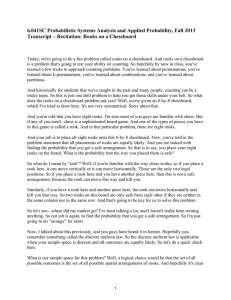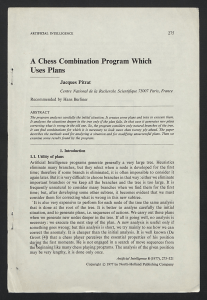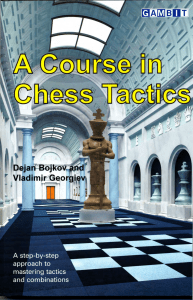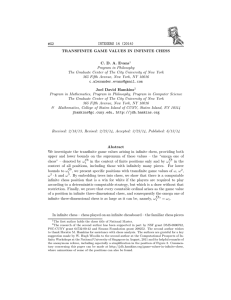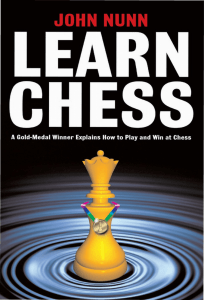Basic Chess Tutorial 1. SET UP THE PIECES PROPERLY A chess
advertisement
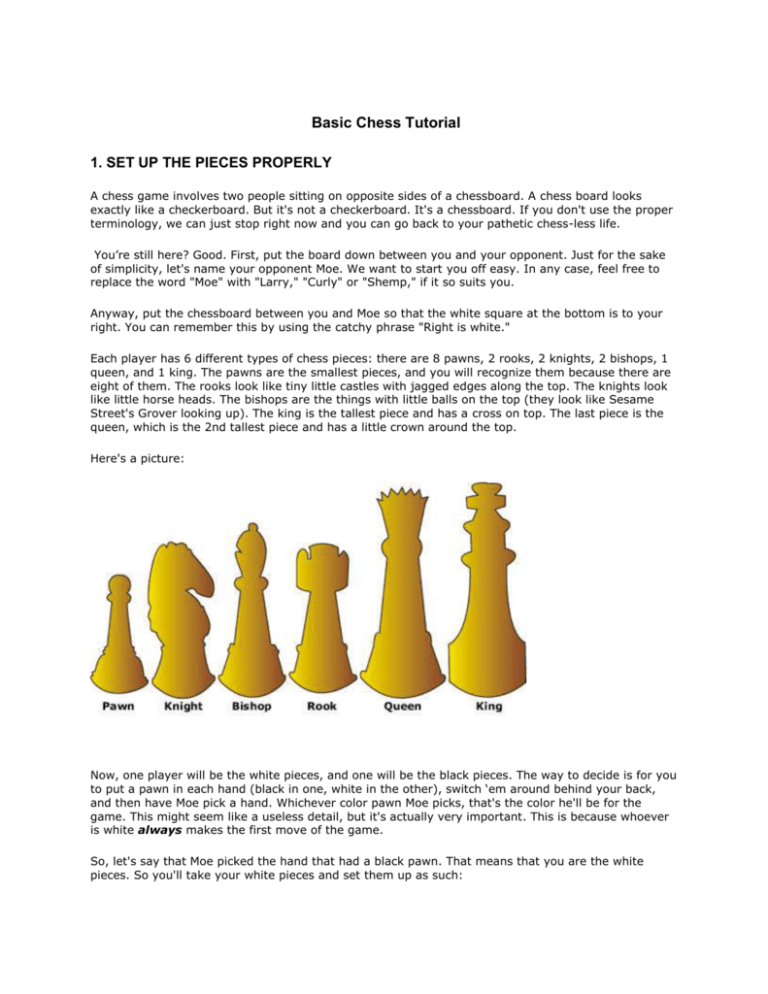
Basic Chess Tutorial 1. SET UP THE PIECES PROPERLY A chess game involves two people sitting on opposite sides of a chessboard. A chess board looks exactly like a checkerboard. But it's not a checkerboard. It's a chessboard. If you don't use the proper terminology, we can just stop right now and you can go back to your pathetic chess-less life. You’re still here? Good. First, put the board down between you and your opponent. Just for the sake of simplicity, let's name your opponent Moe. We want to start you off easy. In any case, feel free to replace the word "Moe" with "Larry," "Curly" or "Shemp," if it so suits you. Anyway, put the chessboard between you and Moe so that the white square at the bottom is to your right. You can remember this by using the catchy phrase "Right is white." Each player has 6 different types of chess pieces: there are 8 pawns, 2 rooks, 2 knights, 2 bishops, 1 queen, and 1 king. The pawns are the smallest pieces, and you will recognize them because there are eight of them. The rooks look like tiny little castles with jagged edges along the top. The knights look like little horse heads. The bishops are the things with little balls on the top (they look like Sesame Street's Grover looking up). The king is the tallest piece and has a cross on top. The last piece is the queen, which is the 2nd tallest piece and has a little crown around the top. Here's a picture: Now, one player will be the white pieces, and one will be the black pieces. The way to decide is for you to put a pawn in each hand (black in one, white in the other), switch ‘em around behind your back, and then have Moe pick a hand. Whichever color pawn Moe picks, that's the color he'll be for the game. This might seem like a useless detail, but it's actually very important. This is because whoever is white always makes the first move of the game. So, let's say that Moe picked the hand that had a black pawn. That means that you are the white pieces. So you'll take your white pieces and set them up as such: 1. 2. 3. 4. Put your rooks on the two outside corners of the first row. Next to each rook, put a knight. Next to each knight, put a bishop. The queen goes on the first row on the same color box as the color of your pieces. So if you are the black pieces, put the queen on the remaining black, in the first row, and put the king on the remaining white square. If you are the white pieces, put the queen on the remaining white square and the king on black. 5. Line up all your pawns on the second row. Was that a tad confusing? Then here's a shortcut: the pieces get taller as you move inwards, and the queen goes on her own color. Your queen will always face your opponent's queen. Same thing goes for the king. In the end, assuming you are the white pieces, your board should look like this: Before we scare you with scary chess terminology, heed our warning: chess players are weirdos. And not normal weirdos like the people who talk to you at the bus stop, even though you are obviously not going to respond. Chess players are proud to be among the weirdest souls on earth. Case in point: you're not allowed to refer to the rows and columns on a chessboard as a "row" and a "column." You must refer to them as a "rank" and a "file." (Perhaps the vocabulary makes them feel mysterious and dangerous.) Here are two clues to remembering which is which: 1) Think of a file like a single file line, which you usually think of as front-to-back, which will remind you that the files are the columns 2) Just remember that "row" and "rank" both begin with an R. And just in case things weren't complicated enough, each rank has a number and each file has a letter, so that everybody can follow what's going on. For example, your knight is in box B1 (you have another one in G1). Moe's king is on E8. You always list the file, then the rank. If you find this difficult to remember, think of the game Battleship: you call out "B3," not "3B." 2. How the Chess pieces move Before you even try to move the pieces, you should keep on reading. Knowing how each piece move is an important part of winning. So pay attention! Pawns: If a pawn hasn’t made a move, then it has the option of moving two spaces forward. After that, it moves one forward at a time. The pawn captures others pieces diagonally ONLY one square ahead of itself. Pawns can’t retreat! Knights: The only piece that can jump over other pieces. The knight always moves like the letter "L” (three spaces in one direction, then one space left or right). Keep in mind, though, that the letter can be sideways or even upside-down and backwards! Rooks: They can move any number of squares in straight line, horizontally or vertically, but the rook may not jump a piece of either color. Bishops: They can move any number of squares diagonally, but like the rook, it may not jump a piece of either color. Like the rook, it can move forward or backward, but in only one direction at a time. Queen: The most powerful piece in the game! It can move in any direction for as many spaces as it wants. It combines the strengths of both a bishop and a rook. Don’t lose this piece early in the game or you’ll probably lose! King: This piece is the most important in the game. It can move one space in any direction. Don’t let the king get captured or else you lose!!! 3) How to win the game Capture the opposing team’s King! If you want the ULTIMATE instructional website for chess, go here! -----> http://www.princeton.edu/~jedwards/cif/intro.html


